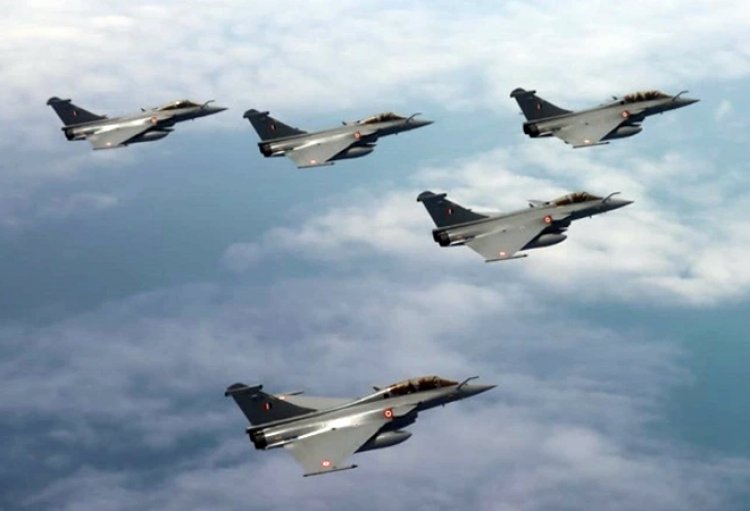Indian Air Force (IAF) Renaming Itself as the Indian Air and Space Force (IASF)
STORIES, ANALYSES, EXPERT VIEWS

It was recently reported that the Indian Air Force (IAF) is renaming itself as the Indian Air and Space Force (IASF) as part of its on-going overall drive to transform itself from ‘a potent air-power’ to ‘a credible aerospace power’ for the future. It has also formulated a new doctrine for effective exploitation of the ‘air and space continuum’ and a ‘Space Vision 2047’, writes Govind Bhattacharjee (commentator, author and academic) “for which it expects the government’s approval soon.
“It is now readying itself to fully exploit the final frontier of space assisted by DRDO, ISRO and its commercial arm, NewSpace India Limited (NSIL) which was set up in 2019, besides IN-Space (Indian National Space Promotion and Authorisation Centre) which was set up in 2020 to facilitate collaboration between the private sector and ISRO. Other major space powers already have similar structures in place….”
Space, writes Bhattacharjee “is definitely turning into the battleground for future wars and has to be integral to any country’s security system. Hence IAF’s existing fully-automated air defence network, called the Integrated Air Command and Control System (IACCS), will also have to evolve into IASCCS. IAF wants India to have over 100 big and small military satellites in the next 7-8 years when the tri-Service Defence Space Agency set up in 2019 evolves into a full-fledged Space Command.”
LEO (Low earth Orbit) and Geosynchronous Earth Orbit (GEO) satellites: At present, the USA leads the constellation of satellites with nearly 2000 satellites, followed by China at a distant second with about 500, Russia and UK (about 200 each) and Japan (about 100). As of February 2022, India had only 52 operational satellites in space, 23 and 29 operational satellites respectively in LEO (Low earth Orbit) and Geosynchronous Earth Orbit (GEO). According to ISRO, till 2022, India has launched a total of 124 Indian satellites, including those from private operators.
There are about 5,000 active satellites today, writes Bhattacharjee “but they will be joined by many more in the years to come. More than three fourths of these satellites are in LEO, and about 10 per cent are in Geosynchronous Earth Orbit (GEO) at a distance of almost 36,000 km, also known as geostationary orbit as a satellite here appears stationary to an observer on the Earth due to the same orbital period. It is here that most of the communication and TV, radio and weather satellites are placed, because each satellite placed in GEO can ‘see’ as much as 42 per cent of the earth’s surface.
“……..GEO is also where most dual-use military communication satellites of the big three space powers and other nations are placed. Beyond GEO is the area where satellites go to die in deeper space at the end of their useful life, when their thrusters push them out of harm’s way for other active satellites. More than a hundred satellites are also in the Medium Earth orbit (MEO), between the LEO and the GEO."
Over “half of the more than 500 satellites estimated to have military or dual-use purposes are in LEO, where their low altitude coupled with short orbital periods make them ideal for Earth observation and surveillance. Some of the LEO satellites, like the International Space Station at 400 km, can even be seen with naked eyes. More than 90 countries have placed satellites in space, using the launch facilities which only 11 countries including India have developed so far.”
Air power would likely be space power: Air power writes Bhattacharjee “would likely be space power, for which the ability to place military assets in space ~ especially in the LEO ~will become the determining factor. LEO is also the area where any spacecraft travelling to the Moon and beyond can be refuelled and resupplied, and refuelling will be necessary if distant planets like Mars or asteroids are to be explored for energy and mineral resources. Hence whoever controls this corridor will become a gatekeeper to the outer space beyond, and can prevent a rival from refuelling within it….”
LEO will “also be the gateway to outer space to explore which spaceships would need refuelling; a nation that develops such facilities would easily control the spaceships of other nations going beyond LEO….”
India’s space program has so far remained focused on civilian uses, but the military aspect cannot be ignored.
















